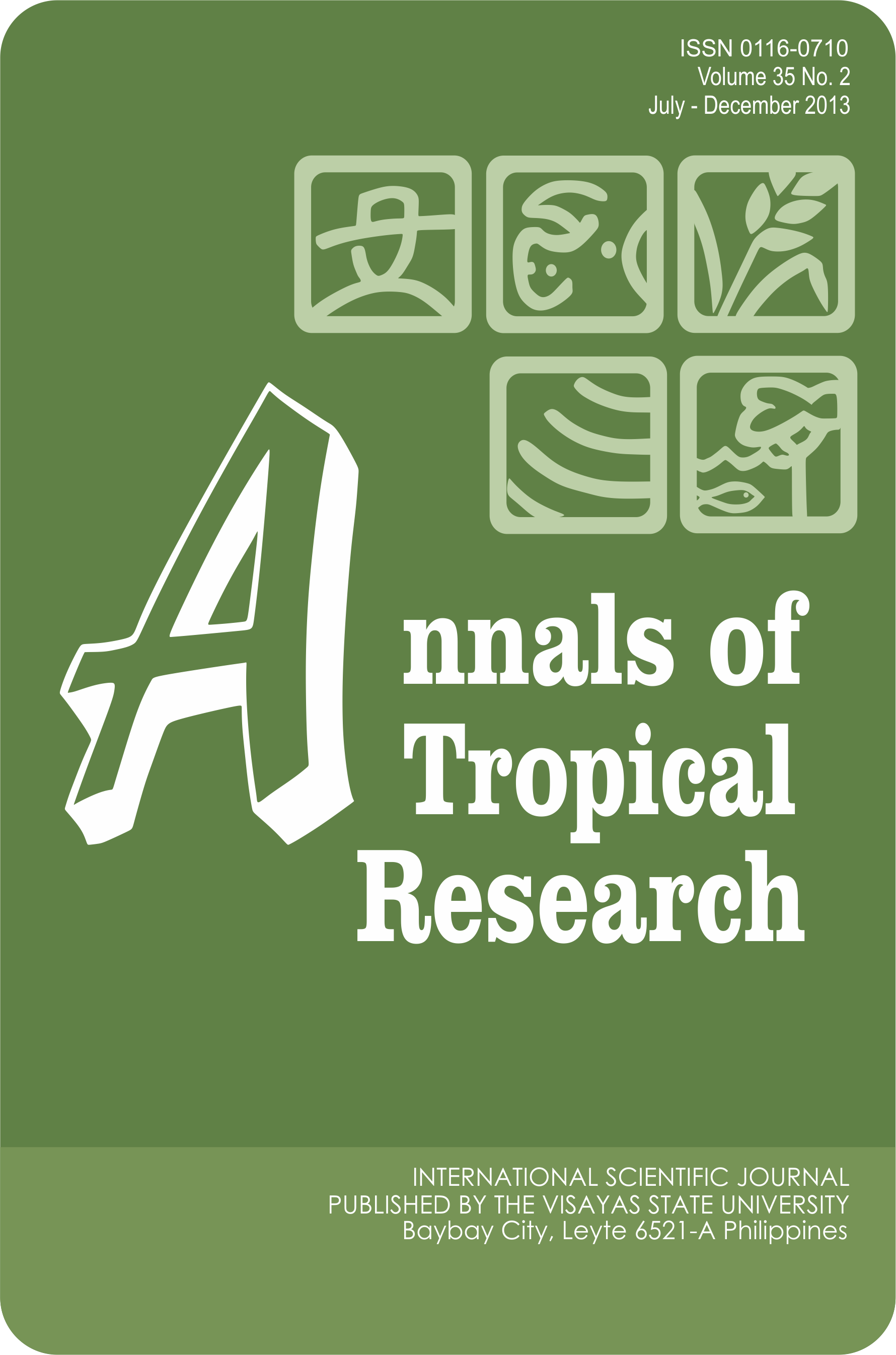Using Stable Carbon and Nitrogen Isotopes to Evaluate Parrotfish Diet
DOI:
https://doi.org/10.32945/atr3527.2013Keywords:
δ13C, δ15N, Canigao Island, diet, trophic positionAbstract
With limited inconclusive data provided by gut content analysis, stable isotope analysis has recently emerged to validate trophic position and dietary intake. In this study, a dual isotope approach was used to reveal parrotfish feeding. Comparisons of δ13C and δ15N values of muscle and liver among yellowbarred (Scarus dimidiatus), rosy cheek (S. psittacus), and blue-barred (S. ghobban) parrotfishes from Canigao Island, Matalom, Leyte were made to track dietary shifting and to compare dietary carbon intake. Trophic assignment was based on the assumption that consumers are enriched by a factor of 3-4‰ for δ15N, relative to their diet. The δ13C values of muscle tissues of the three species of parrotfish were significantly higher (p=0.001) than those of their liver suggesting dietary shifting. The δ13C values of both muscle and liver tissues of S. ghobban, but δ13C values of muscle and liver of S. psittacus and S. ghobban did not vary significantly. These mean that S. dimidiatus have different long term and recent dietary carbon intake compared to the other two species, while S. psittacus and S. ghobban have relatively the same dietary carbon intake. Considering the 1‰ δ13C trophic enrichment of consumers relative to their diet, possible dietary carbon sources of the sampled parrotfish include Dendronephthya spp., Ulva reticulata, Sargassum oligocystum, Dictyota sp., Digenea sp., Chlorodesmis sp., and Sargassum muticum suggesting that parrotfishes are generalist consumers. Mean stable isotope nitrogen ratios of S. dimidiatus (5.9‰), S. psittacus (6.9‰) and S. ghobban (6.7‰) together with
their carbon isotope ratios confirmed that all sampled parrotfish species are generalist primary consumers.
Downloads
Submitted
Published
How to Cite
Issue
Section
License

This work is licensed under a Creative Commons Attribution-NonCommercial-ShareAlike 4.0 International License.











